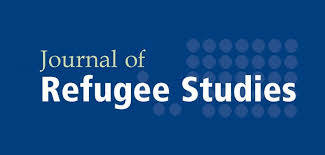
The new article How do perceptions, fears, and experiences of violence and conflict affect considerations of moving internally and internationally? in Journal of Refugee Studies contributes to a more nuanced understanding of the relationship between conflict and mobility, by disaggregating ‘conflict’ and drawing on sub-national geographical units.
We draw on the MIGNEX project’s cross-country survey and qualitative data for local areas in Afghanistan, Ethiopia, Nigeria, and Somalia. We ask, what are the specific roles of perceptions, fears, and experiences of violence and conflict in relation to people’s considerations of internal or international migration?
We find that that general perceptions of insecurity are less influential in shaping considerations to leave. Instead, specific fears and actual experiences of violence affect considerations of migration.
People affected by conflict mostly consider staying within their country, rather than making a more expensive—and often more dangerous—journey to another country.
This is an important finding for humanitarian and migration policy and depictions in the (Global North) media, which often make the assumption that everyone affected by conflict wants to leave the country.
The prevalence of internal displacement in conflict settings is well known. However, existing data has severe limitations. Using our sub-national dataset of more than 5000 young adults across ten contexts, varyingly affected by conflict, allows us to show the differentiated effects of violence on both internal and international mobility considerations.
Strikingly, perceptions, fears, and experiences of violence and conflict mostly do not lead to considerations of leaving. This exposes a mobility bias in research on forced displacement and migration, and in broader political discourses. Our dataset of young adults who have currently not left their local areas shows that mobility is only one possible response to conflict and violence.
Their immobility can, on the one hand, be understood in the context of broader life aspirations—which may or may not include migration—and, on the other hand, be a result of the lack of ability to migrate.
Those wanting to leave may not have the financial means or social networks to actually go. The extent and variation of immobility in conflict-affected areas warrants further attention. Better understanding of internal mobility—both actual and considered—taking into account both conflict-related and non-conflict-related factors – is required. And, where access to data allows, there are important benefits to being able to analyse (considerations about) movements within and across national borders together.
Our article offers a contribution to enhancing understanding of how different types of conflict factors, varyingly shape different types of (im)mobility. Drawing on more fine-grained understanding, humanitarian responses can also better support people living in conflict-affected areas, whether they leave or not.
The article is co-authored by Jessica Hagen-Zanker (ODI), Marcela Rubio (ODI) and Marta Bivand Erdal (PRIO). It is an output of the MIGNEX project - Aligning Migration Management and the Migration-Development Nexus. MIGNEX has received funding from the European Union’s Horizon 2020 research and innovation programme under grant agreement No. 770453.
Read the article: How do perceptions, fears, and experiences of violence and conflict affect considerations of moving internally and internationally? Open Access in Journal of Refugee Studies: https://academic.oup.com/jrs/advance-article/doi/10.1093/jrs/feae021/7642982?searchresult=1





